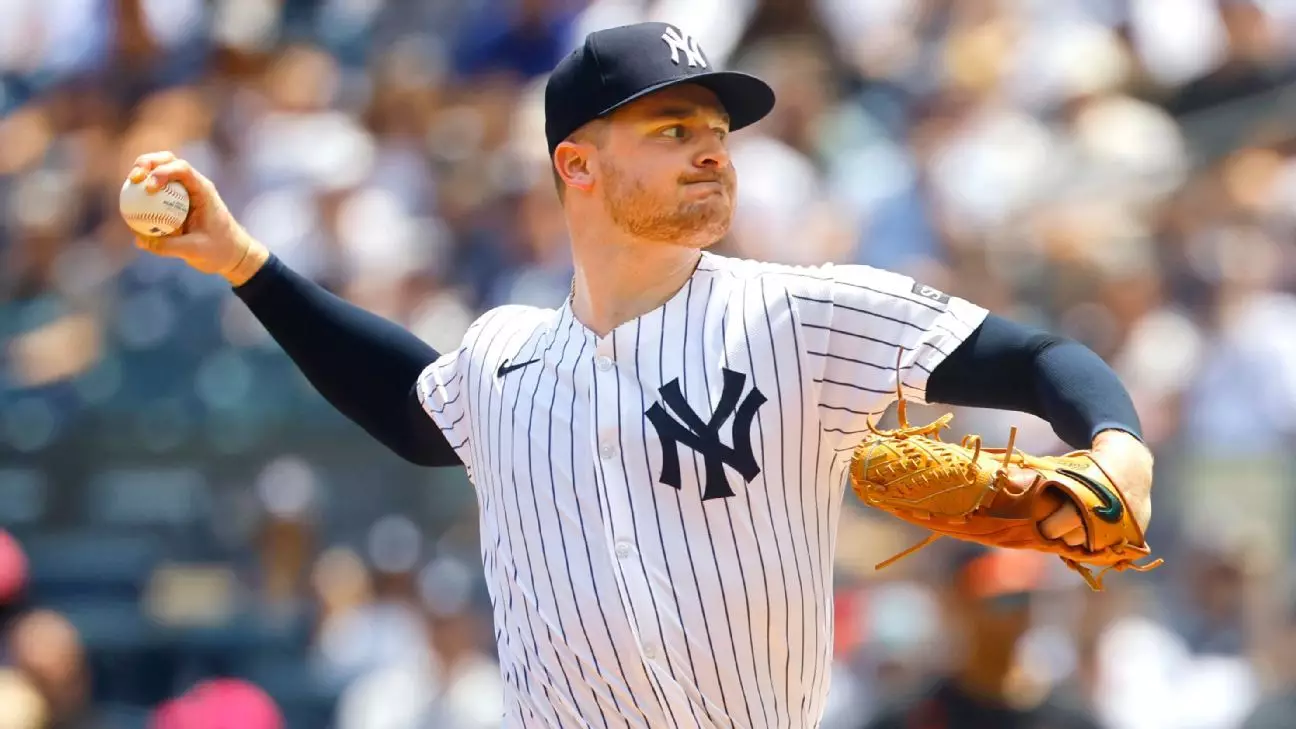In the high-stakes world of Major League Baseball, few setbacks strike harder than injuries to key players, and the Yankees are currently experiencing one of their most severe crises in recent memory. The impending loss of Clarke Schmidt to Tommy John surgery is more than just a personal blow to the promising young pitcher; it signifies a crucial blow to the Yankees’ fragile starting rotation. Schmidt, a first-round pick with substantial promise, has been a bright spot in an otherwise tumultuous season marred by injuries and underperformance. His anticipated absence for most of next year underscores the raw reality: the Yankees are vulnerable, and their pitching depth is perilously thin.
The news about Schmidt is particularly unsettling because it highlights the Yankees’ ongoing injury epidemic. Gerrit Cole’s recent Tommy John surgery offers a stark reminder that even proven aces are not invincible. Coupled with the lat injury that has sidelined Luis Gil and Ryan Yarbrough’s oblique strain, the team is suffering from a crisis of available reliable arms. This injury cascade reveals a deeper flaw in the team’s approach to pitching management and injury prevention. The Yankees must reevaluate their training, workload, and recovery protocols. Relying heavily on high-strain starters without adequate rotation depth fosters a risk-laden environment that inevitably leads to such devastating consequences.
Strategic Implications: Rethinking Rotation and Market Moves
With Schmidt headed for a long-term absence, the Yankees are left scrambling to patch their rotation. The team’s internal options, notably veterans like Carlos Carrasco and Allan Winans, are band-aids rather than solutions. These pitchers have had their moments but lack the consistency and high upside that Schmidt once brought. Meanwhile, prospects like Cam Schlittler offer hope for the future but are not ready-made solutions for immediate needs.
This injury crisis necessitates a strategic overhaul. The Yankees cannot afford to rely solely on internal talent — the current depth is insufficient. The trade market will likely be the primary avenue to acquire seasoned pitchers before the July 31 deadline. They must seek proven veterans or high-upside prospects from contending teams looking to shed payroll or rebuild. The team’s management needs to identify not just immediate fixes but also long-term solutions that can withstand the rigors of a grueling postseason chase.
The Yankees’ front office should also focus on building a more resilient pitching staff through smarter health management and development. This means investing in cutting-edge sports science, load management, and injury prevention strategies that have transformed other teams’ approaches. Seize this moment as a catalyst for change, emphasizing longevity over short-term gains to protect the team’s core assets for future seasons.
The Broader Impact: A Culture Shift Must Occur
Beyond immediate roster moves, this injury wave reveals a deeper cultural issue within the Yankees’ organization. Resilience and durability are not just physical attributes but also strategic priorities. The team must foster an environment where pitchers are not pushed beyond sustainable limits simply for short-term success. This involves re-evaluating how workload is managed, especially during spring training and early season stretch runs.
To prevent a repeat of this crisis, the Yankees must embrace a paradigm shift—prioritize health, longevity, and sustainability over aggressive, high-stakes pitches. This might involve limiting innings, employing more bullpen games, or even rethinking starting pitcher development altogether. The alternative is a cycle of injuries that depletes the team’s talent pool and diminishes chances for postseason glory.
Moreover, leadership must instill a mindset that values health as highly as performance. When players see that their well-being is prioritized, they are more likely to perform at their best without fear of risking their careers. The Yankees, as one of baseball’s most storied franchises, have the resources and influence to lead this cultural revolution, but it requires honest reflection and decisive action.
The Yankees are standing at a crossroads—an injury-driven crossroads that threatens their immediate championship aspirations and exposes underlying weaknesses. While the loss of Clarke Schmidt is undeniably a setback, it also presents an opportunity to reevaluate and reinvent their approach to pitching, health, and team-building. The true test lies in their willingness to adapt, to leverage this adversity as a catalyst for systemic improvements. Only through strategic foresight and a genuine commitment to player health can the Yankees hope to transcend this painful chapter and emerge stronger, more resilient, and better prepared for future triumphs.


Leave a Reply